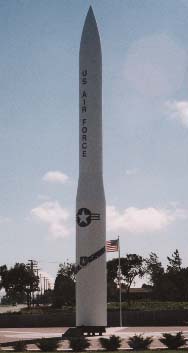Nuclear Weapons 374 - Some Defense Analysts Say That We Should Abandon Our Fleet Of Minuteman Missiles
minutemanIII.jpg

The U.S. government is planning on modernization and expansion of our nuclear forces in response to the behavior of Russia in the past few years. Having three quarters of a trillion dollars this year allocated to the defense budget has encouraged the Pentagon to throw a lot of money at a variety of old and new weapons systems. I have mentioned the nuclear triad before which consists of ICBMs, nuclear armed submarines and nuclear bombers.
The Department of Defense projected recently that three hundred and twenty-five billion dollars on modernization of the U.S. nuclear forces thru 2026. However, with current estimations for new programs rising in cost and new programs being discussed, it is likely that this estimate will fall far short of needed funds for Pentagon plans. The needed funds to maintain current and future weapons systems being planned will tax the Pentagon budget, especially if there is a turn down in the economy. Some defense analysts believe that it is time to rethink one leg of the nuclear triad.
The U.S. has six hundred and seventy-eight Minuteman III ICBMs currently in service. At any given time, there are four hundred Minuteman missiles operationally deployed. The function of this missile fleet as a nuclear deterrent is not so much as an attack force but rather a retaliation force that the Russians would need to destroy if they attacked us. This would require them to spend a lot of missiles attacking the Minuteman installations scattered across the center of the nation which could have been used to attack other targets. The bunkers that house the Minutemen are hardened against nuclear attack and would probably require multiple direct hits by Russian missiles to reliably destroy. The nickname for the Minutemen fleet is a U.S. “nuclear sponge.”
While there is an abstract logic to this idea of a nuclear sponge, the truth is that it invites a massive attack with hundreds of nuclear warheads on the center of the country where a great deal of our food is grown. Such an attack would cause horrendous devastation and the fallout and refugees would spread quick to the rest of the country. The entire global weather system would undergo huge changes that might spell the end of human civilization. Many defense analysts question the actual deterrence value of the U.S. Minuteman fleet.
The U.S. Minuteman fleet of deployed missiles is currently targeted at the open ocean just in case there is an accidental launch. Considering the time and complexity of retargeting these missiles reinforces the suggestion that these missiles are just there to be draw enemy warheads.
There are plans for replacing the Minuteman III missiles with new missiles. The reuse of the Minuteman infrastructure will help reduce costs. However, the current estimate for a single new Minuteman replacement is one hundred billion dollars but that price appears to be to low and estimates are already rising. The Pentagon says that competition should bring the price per missile down and the new missiles will be cheaper to maintain but that may not turn out to be the case. The forty trillion-dollar price tag to replace the Minutemen is just too high.
The money saved by eliminating the ICBM leg of the nuclear triad could be applied to the B-21 Raider Stealth Bomber program and the Columbia class nuclear ballistic submarine program. Both of these programs are more flexible and potentially effective in a conflict than the Minutemen.